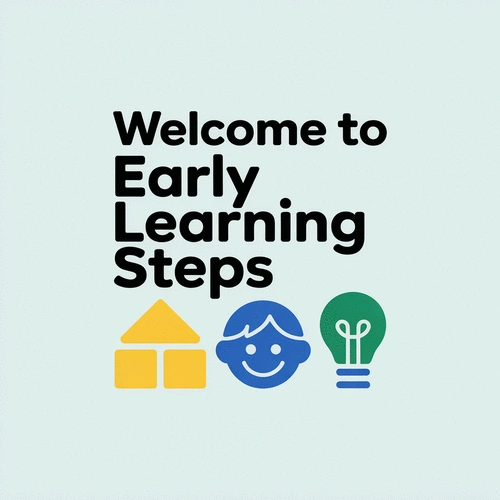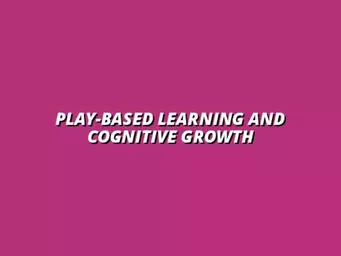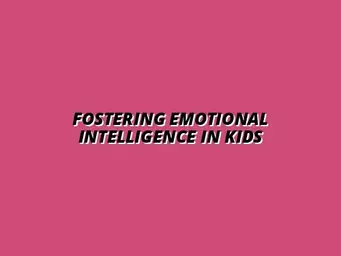What if enhancing emotional intelligence could unlock your students' full potential? In a world where academic success is often prioritized, understanding and managing emotions is equally crucial. By fostering emotional intelligence in the classroom, educators can cultivate environments where students thrive both academically and personally.
What You Will Learn
- Emotional intelligence (EI) is vital for student success, fostering empathy, self-regulation, and interpersonal skills.
- High EI enhances academic performance, improves focus, and strengthens peer relationships.
- Activities like journaling and group discussions can promote emotional awareness and literacy in students.
- Creating emotional safety in the classroom encourages students to express themselves and engage deeply in their learning.
- Integrating EI strategies prepares students to navigate life's challenges, developing resilience and problem-solving skills.
Key Components and Benefits of Emotional Intelligence in Education
Emotional intelligence (EI) is crucial for student success, involving emotional awareness, regulation, and empathy. The visual below highlights its core components and the significant benefits it brings to academic and personal development. For more insights on this topic, consider reading about fostering emotional intelligence in kids.
Defining Emotional Intelligence
- • Emotional Awareness: Understanding one's own feelings and those of others.
- • Emotional Regulation: Managing emotions effectively in various situations.
- • Empathy: Recognizing and responding to the emotions of peers.
Benefits of Teaching EI
- • Improved Academic Performance: Better focus and engagement.
- • Stronger Social Skills: Leading to positive peer relationships.
- • Enhanced Problem-Solving: Creative solutions to challenges.
Building Resilience Through EI
- • Encourage Problem-Solving: View challenges as growth opportunities.
- • Promote Positive Self-Talk: Cultivate self-encouragement.
- • Model Resilient Behavior: Share stories of overcoming obstacles.
Role of Emotional Safety
- • Establish Trust: Through open communication and active listening.
- • Supportive Environment: Encourage all students to feel valued.
- • Encourage Openness: Normalize sharing feelings in the classroom.
Understanding Emotional Intelligence in the Classroom
In today’s educational landscape, emotional intelligence (EI) is recognized as a vital component of student success. But what exactly does it mean? At its core, emotional intelligence refers to the ability to recognize, understand, and manage our own emotions while also being aware of the emotions of others. This skill is essential for fostering a positive learning environment, as it helps students develop empathy, self-regulation, and strong interpersonal relationships.
The importance of emotional intelligence in the classroom cannot be overstated. Children with high EI are better equipped to navigate social complexities, resolve conflicts, and engage in collaborative learning. By nurturing these skills, we empower students not just academically, but also prepare them for life's challenges beyond school.
Defining Emotional Intelligence and Its Importance
Emotional intelligence encompasses several key components, including emotional awareness, emotional regulation, and empathy. These elements form the foundation for healthy relationships and effective communication. In my experience at Early Learning Steps, I’ve seen firsthand how fostering emotional intelligence in our children leads to a more harmonious classroom environment.
- Emotional Awareness: Understanding one's own feelings and those of others.
- Emotional Regulation: Managing emotions effectively in various situations.
- Empathy: Recognizing and responding to the emotions of peers.
By focusing on these aspects, educators can create a supportive atmosphere where children feel safe to express themselves and grow emotionally. For additional guidance, consider exploring parenting tips for emotional growth.
Benefits of Teaching Emotional Intelligence to Students
Integrating emotional intelligence into the curriculum offers numerous benefits for students. Not only does it enhance academic performance, but it also contributes to overall well-being. Here are some key benefits that I’ve observed:
- Improved academic performance through better focus and engagement.
- Stronger social skills, leading to positive peer relationships.
- Enhanced problem-solving abilities, allowing for creative solutions to challenges.
By prioritizing emotional intelligence, we’re equipping children with the tools they need to navigate life’s ups and downs effectively!
Exploring Emotional Awareness and Emotional Literacy
Emotional awareness and literacy are foundational elements of emotional intelligence. Emotional awareness involves recognizing and understanding one’s own feelings, while emotional literacy refers to the ability to express those emotions constructively. As educators, we can foster these skills through various activities that encourage self-reflection and communication.
- Journaling to express thoughts and feelings.
- Group discussions about emotions in literature.
- Creating emotion charts to help identify feelings.
When we actively teach our students to recognize and articulate their emotions, we help them become more emotionally intelligent individuals. This skill set not only benefits their academic journey but also lays the groundwork for healthier relationships in their future!
We Want to Hear From You!
What do you think about the importance of emotional intelligence in the classroom? Share your thoughts below:
Long-Term Impact of Emotional Intelligence on Student Outcomes
Understanding the long-term impact of emotional intelligence (EI) on student outcomes is vital for educators. As we foster emotional intelligence in the classroom, we witness remarkable transformations in both academic and personal domains. Children equipped with strong emotional skills tend to excel not only in their studies but also in their relationships with peers and adults.

Research indicates that students with high emotional intelligence often navigate social situations more effectively, leading to lasting friendships and collaborative skills. By emphasizing EI, we’re not just preparing children for their next test; we’re nurturing well-rounded individuals ready to tackle life's challenges!
Academic Success and Social Relationships
Emotional intelligence plays a crucial role in enhancing academic success and fostering positive social relationships. Students who understand and manage their emotions are better prepared to focus and engage with their studies. Here are some key benefits:
- Improved Focus: Students with high EI can concentrate better, leading to higher academic performance.
- Enhanced Collaboration: Emotional awareness helps students work effectively in teams, promoting a sense of community in the classroom.
- Stronger Relationships: Better emotional regulation leads to more meaningful connections with peers and teachers.
By prioritizing emotional intelligence, we create a supportive learning environment that encourages both academic growth and positive interactions among students.
Building Resilience Through Emotional Intelligence
In today’s rapidly changing world, resilience is more important than ever. Emotional intelligence is a key component in building this resilience. When students learn to understand and manage their emotions, they develop the ability to bounce back from setbacks. Here’s how we can reinforce resilience:
- Encourage Problem-Solving: Teach students to approach challenges as opportunities for growth.
- Promote Positive Self-Talk: Help students cultivate an inner dialogue that fosters self-encouragement.
- Model Resilient Behavior: As educators, sharing our own stories of overcoming obstacles can inspire students.
By embedding resilience-building strategies into our curriculum, we empower students to thrive in the face of adversity. They learn not just to survive but to flourish!
The Role of Emotional Safety in Promoting Student Well-Being
Creating an environment of emotional safety is essential for promoting student well-being. When students feel safe to express their emotions and share their thoughts, they are more likely to engage deeply in their learning. Here are essential elements to consider:
- Establish Trust: Build trusting relationships through open communication and active listening.
- Create a Supportive Environment: Encourage all students to feel valued and respected, reducing feelings of anxiety.
- Encourage Openness: Foster a classroom culture where sharing feelings is normalized and encouraged.
By prioritizing emotional safety, we ensure that every student can thrive, leading to enhanced learning outcomes and overall well-being. For further reading, explore building emotional skills in preschoolers.
Engaging with Emotional Intelligence: Next Steps for Educators
As we explore ways to enhance emotional intelligence in our classrooms, it’s important to commit to ongoing learning and improvement. This journey is not just about implementing strategies; it’s about continuously evolving to meet the needs of our students!
Resources for Continued Learning and Professional Development
To effectively incorporate emotional intelligence into our teaching practices, educators should seek out various resources. From workshops to online courses, there are many opportunities to deepen our understanding:
- Workshops and Conferences: Attend professional development workshops that focus on emotional intelligence strategies.
- Books and Publications: Explore literature that discusses emotional intelligence and its application in education.
- Online Courses: Take advantage of online platforms that offer courses on social-emotional learning and EI.

By investing in our own education, we enhance our ability to support our students in their emotional growth!
Call to Action: Implementing EI Strategies in Your Classroom
Now that we understand the importance of emotional intelligence, it’s time to take action! As educators, we can make a significant impact by actively implementing these strategies in our classrooms. Here are some actionable steps:
- Incorporate EI Activities: Start with simple activities that promote emotional awareness among students.
- Seek Feedback: Regularly ask for student input on their emotional experiences in the classroom.
- Share Success Stories: Celebrate moments when students demonstrate strong emotional intelligence.
Workshops and Teaching Resources for Effective EI Integration
At Early Learning Steps, we are committed to providing educators with the necessary tools and resources for integrating emotional intelligence into their teaching. Explore our workshops and teaching resources designed to make this process both engaging and effective. Together, we can nurture the next generation of emotionally intelligent learners!
Recap of Key Points
- Emotional intelligence (EI) is crucial for fostering a positive learning environment, helping students develop empathy and self-regulation.
- Key components of EI include emotional awareness, emotional regulation, and empathy, all essential for effective communication and relationships.
- Teaching EI enhances academic performance, social skills, and problem-solving abilities, preparing students for life's challenges.
- Activities like journaling and group discussions can foster emotional awareness and literacy among students.
- Creating an emotionally safe environment is vital for student well-being and engagement in learning.
- Educators should commit to ongoing learning and implement EI strategies to support emotional growth in the classroom.
Frequently Asked Questions About Emotional Intelligence in the Classroom
Q: What is emotional intelligence (EI) in an educational context?
A: Emotional intelligence in education refers to the ability of students to recognize, understand, and manage their own emotions, as well as to be aware of and respond to the emotions of others. It encompasses emotional awareness, emotional regulation, and empathy, all crucial for academic and personal success.
Q: How does emotional intelligence benefit students academically?
A: High emotional intelligence leads to improved academic performance by enhancing focus and engagement in learning. Students with strong EI can better manage stress, collaborate effectively with peers, and approach challenges with a problem-solving mindset, all of which contribute to better academic outcomes.
Q: What are some practical activities to promote emotional awareness in the classroom?
A: Educators can foster emotional awareness through activities such as journaling to express thoughts and feelings, group discussions about emotions in literature or real-life scenarios, and creating emotion charts to help students identify and articulate their feelings. These activities encourage self-reflection and constructive communication.
Q: Why is emotional safety important in the classroom?
A: Emotional safety is vital because it creates an environment where students feel secure enough to express their emotions and thoughts without fear of judgment. This fosters deeper engagement in learning, builds trust between students and educators, and promotes overall student well-being, leading to enhanced learning outcomes.
Q: How can educators build resilience in students through emotional intelligence?
A: Educators can build resilience by encouraging students to view challenges as opportunities for growth, promoting positive self-talk to cultivate self-encouragement, and modeling resilient behavior by sharing personal stories of overcoming obstacles. These strategies help students develop the ability to bounce back from setbacks and thrive.
To further enhance children's ability to navigate life's ups and downs effectively, consider exploring resources on nurturing emotional intelligence at home.










